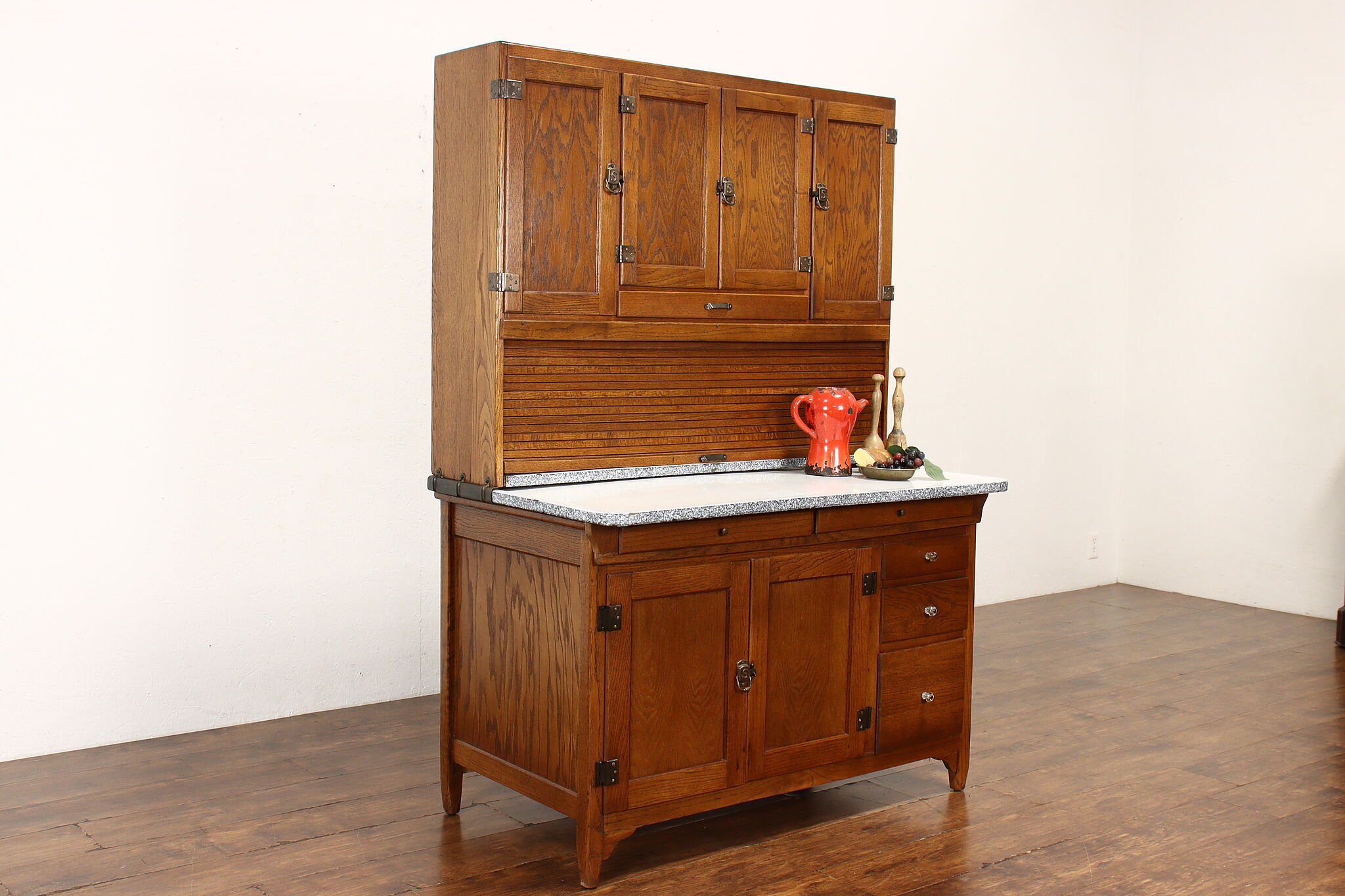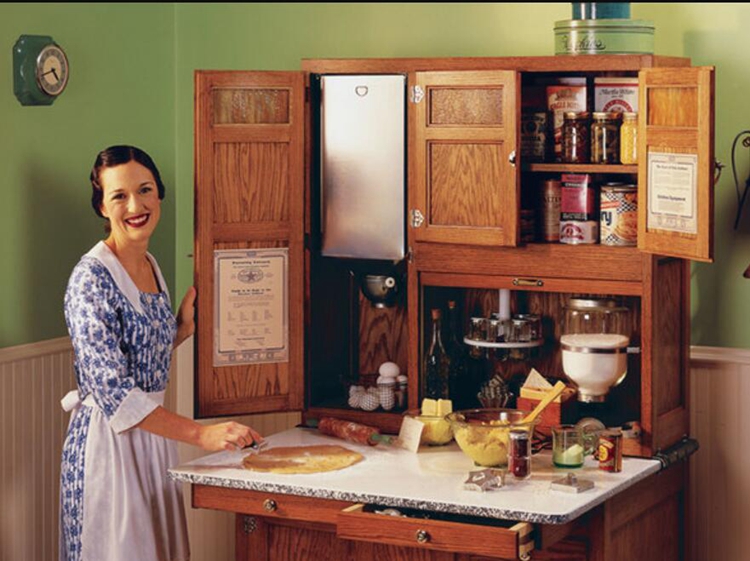Hoosier Cabinet History and Evolution

Hoosier cabinets, iconic pieces of American kitchen furniture, have a fascinating history that reflects the changing needs and styles of the early 20th century. Their origins lie in the heartland of America, where they were initially designed to streamline and modernize food preparation in the home.
Hoosier Cabinet Origins and Significance
Hoosier cabinets emerged in the late 19th century, primarily as a response to the growing popularity of home economics and the desire for more efficient kitchens. The name “Hoosier” is attributed to the state of Indiana, where the first commercially successful Hoosier cabinets were manufactured by the Hoosier Manufacturing Company. These cabinets were initially marketed to women, emphasizing their ability to simplify household tasks and improve kitchen organization.
Evolution of Design and Features
The design and features of Hoosier cabinets evolved significantly over time, reflecting changing trends in kitchen design and the incorporation of new technologies.
Early Hoosier Cabinets (Late 19th Century to Early 20th Century)
Early Hoosier cabinets were characterized by their simple, utilitarian design. They typically featured a large, central work surface with drawers and cabinets below for storage. Some early models included a built-in flour bin, a bread drawer, and a small, enclosed space for storing a kerosene lamp.
Mid-20th Century Hoosier Cabinets
As the 20th century progressed, Hoosier cabinets began to incorporate more decorative elements and features. Some models featured ornate carvings, stained glass panels, and built-in spice racks. They also started to incorporate more modern features, such as built-in electric outlets and lighting.
Late 20th Century Hoosier Cabinets
By the late 20th century, Hoosier cabinets had largely fallen out of favor as modern kitchens embraced new technologies and minimalist designs. However, they remained popular among collectors and antique enthusiasts, who appreciated their historical significance and unique craftsmanship.
Notable Hoosier Cabinet Manufacturers
Several manufacturers played a significant role in the production and popularization of Hoosier cabinets.
- Hoosier Manufacturing Company: Founded in 1895, the Hoosier Manufacturing Company was the first to mass-produce Hoosier cabinets, making them accessible to a wider audience. They were known for their sturdy construction and innovative features.
- The Sellers Kitchen Cabinet Company: Based in Elwood, Indiana, The Sellers Kitchen Cabinet Company was another prominent manufacturer of Hoosier cabinets. They produced a wide variety of models, known for their high quality and attention to detail.
- The Jewel Manufacturing Company: The Jewel Manufacturing Company, located in St. Louis, Missouri, produced Hoosier cabinets that were particularly popular in the Midwest. Their cabinets were known for their elegant designs and intricate craftsmanship.
Factors Influencing Hoosier Cabinet Value

The value of a Hoosier cabinet is determined by a complex interplay of factors, including its age, condition, rarity, maker, materials, craftsmanship, and original finishes. Understanding these factors is crucial for both collectors and sellers seeking to accurately assess the worth of these iconic pieces of Americana.
Age and Condition
The age of a Hoosier cabinet is a significant factor in determining its value. Generally, older cabinets from the early 20th century, especially those produced before the 1920s, command higher prices. Condition is equally important. Cabinets in excellent condition, with minimal wear and tear, original finishes, and working hardware, are highly sought after. Conversely, cabinets with significant damage, missing parts, or altered finishes will have a lower value.
Rarity and Maker
The rarity of a particular Hoosier cabinet model can significantly impact its value. Limited-edition models, those produced in small quantities or with unique features, are often more valuable than standard models. The maker of a cabinet also plays a role. Well-known manufacturers like the Hoosier Manufacturing Company, Sellers Kitchen Cabinet Company, and the Jewel Manufacturing Company are highly regarded, and their cabinets tend to command higher prices.
Materials, Craftsmanship, and Original Finishes
The materials used in a Hoosier cabinet’s construction can influence its value. Cabinets made with high-quality hardwoods, such as oak, cherry, or walnut, are generally more valuable than those made with softer woods. The quality of craftsmanship is also essential. Cabinets with intricate details, well-constructed joints, and carefully finished surfaces are more desirable. Original finishes, especially those that have been well-preserved, are highly prized and contribute significantly to a cabinet’s value.
Styles and Models, Antique hoosier kitchen cabinet value
Hoosier cabinets were produced in a variety of styles and models, each with its own unique characteristics and value. Early models, often characterized by simpler designs and functional features, are generally less valuable than later models with more elaborate details and integrated appliances. Popular styles include the “Hoosier” model, the “Jewel” model, and the “Sellers” model, each with its own distinctive features and price range.
Determining the Value of a Specific Hoosier Cabinet: Antique Hoosier Kitchen Cabinet Value

Now that you understand the factors influencing Hoosier cabinet value, let’s delve into the practical steps to assess the worth of your specific cabinet. This process involves a combination of research, evaluation, and comparison.
Step-by-Step Guide to Assessing Value
This step-by-step guide will help you determine the value of your Hoosier cabinet.
- Identify the Maker and Model: The first step is to identify the maker and model of your Hoosier cabinet. Look for markings, labels, or stamps on the cabinet. These can be found on the inside or outside of the cabinet. If you can’t find any markings, you can use online resources or consult with an antique expert to help you identify the maker and model. Once you know the maker and model, you can start to research its history and production dates.
- Assess the Cabinet’s Condition: The condition of your Hoosier cabinet is a major factor in determining its value. Carefully examine the cabinet for any signs of damage, wear, or repair. Look for things like scratches, dents, chips, cracks, and missing parts. If the cabinet has been refinished, it may be worth less than an original finish. Note any imperfections and their impact on the cabinet’s overall appearance.
- Research Comparable Sales and Auction Prices: Once you have a good understanding of the maker, model, and condition of your Hoosier cabinet, you can start to research comparable sales and auction prices. You can use online resources such as eBay, Etsy, and antique auction websites to find similar cabinets that have been sold recently. This will give you an idea of the current market value for similar Hoosier cabinets. You can also consult with an antique appraiser or dealer for a more professional assessment.
- Consider the Cabinet’s Features and Options: Hoosier cabinets were produced with various features and options. Some common features include:
- Flour bin: This is a standard feature of most Hoosier cabinets, used to store flour.
- Sugar bin: This bin is often found in Hoosier cabinets and is used to store sugar.
- Spice drawers: Some Hoosier cabinets have small drawers for storing spices.
- Roll-top doors: These doors are a common feature of Hoosier cabinets and provide a convenient way to access the cabinet’s contents.
- Sliding work surface: This feature is often found on Hoosier cabinets and allows you to extend the work surface for additional space.
- Cast iron hardware: Hoosier cabinets often have cast iron hardware, which can be a valuable feature.
- Original paint: Hoosier cabinets with original paint are highly sought after by collectors.
The presence of these features can increase the value of your Hoosier cabinet.
Key Features, Condition, and Estimated Value Range
The following table provides a general overview of key features, condition, and estimated value ranges for Hoosier cabinets. Remember, these are just estimates and actual values can vary depending on specific factors.
| Key Feature | Condition | Estimated Value Range |
|---|---|---|
| Maker and Model | Highly sought-after maker, rare model | $1,000 – $10,000+ |
| Condition | Excellent, original finish, no damage | $500 – $5,000+ |
| Features | Original paint, cast iron hardware, sliding work surface | $750 – $7,500+ |
| Rarity | Limited production run, unique features | $1,500 – $15,000+ |
Examples of Recent Sales and Auction Prices
To illustrate the value range of Hoosier cabinets, here are examples of recent sales and auction prices:
A 1920s Hoosier cabinet by the Hoosier Manufacturing Company, in excellent condition with original paint and features, sold for $3,500 at a local antique auction.
A 1910s Hoosier cabinet by the Sellers Kitchen Cabinet Company, in good condition with some minor wear and tear, sold for $1,200 on eBay.
A 1930s Hoosier cabinet by the Hoosier Manufacturing Company, in fair condition with some significant damage, sold for $500 at a local flea market.
These examples demonstrate the wide range of values for Hoosier cabinets depending on their maker, model, condition, and features.
Antique hoosier kitchen cabinet value – An antique Hoosier kitchen cabinet can be a beautiful and valuable addition to any home, but if you’re looking for a more practical storage solution for your laundry room, consider building your own cabinets. Building laundry room cabinets can be a fun and rewarding project, and you can customize them to fit your specific needs.
Whether you’re drawn to the timeless charm of a Hoosier cabinet or the practicality of a custom-built laundry room solution, the joy of creating a functional and beautiful space is truly rewarding.
An antique Hoosier kitchen cabinet, with its intricate craftsmanship and timeless design, can be a treasure worth preserving. To enhance its beauty and functionality, consider adding a touch of sparkle with art glass cabinet pulls. These handcrafted pulls, with their vibrant colors and unique patterns, can add a touch of elegance and personality to your antique cabinet, reflecting its historical significance and your own personal style.
